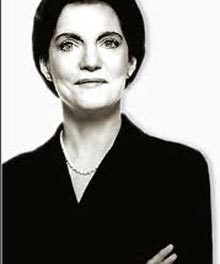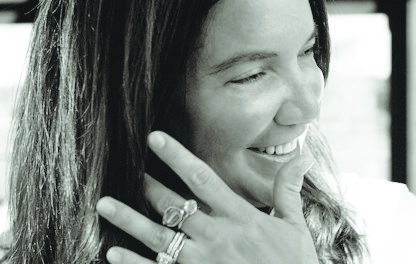If you’re anything like me, you weren’t entirely prepared for the drama of Hurricane Helene’s sojourn here in Beaufort.
I went to bed Thursday night expecting some rain and “30-35 mph gusts,” only to spend the night listening to my phone shriek tornado warnings while mystery objects cracked and thudded outside my window under sustained winds of 80-plus mph. For me, the whole experience registered somewhere between high anxiety and abject terror. My husband slept right through it.
This is our relationship in a nutshell.
Sometime after the power went out, but before the sun came up – as I lay fuming at Jeff’s unconsciousness, listening for the telltale “train sound,” and scrolling on my phone for the company of other freaked-out insomniacs – I realized I’d neglected to close the giant umbrella on our back patio, stack the patio chairs against the house, and bring in our bird feeders.
Actually, it had never occurred to me to do those things. After all, I’d been expecting 30 mph gusts, not a raging monsoon. But here we were.
As I imagined my bird feeders morphing into missiles, my thoughts turned to the birds themselves. I wondered what they were doing out there in the storm. How were they protecting themselves? Where were they hiding? I thought about my beautiful painted buntings and sweet tufted titmice and spunky chickadees, all so tiny and delicate. How were they holding up, I wondered. Were they scared, like me?
At some point, I drifted off without Googling that information – I was too busy yakking with my fellow freaked-out insomniacs – and it was only several days later that I remembered to seek it out. By then, our power had finally been restored – after 3.5 long, sweaty days – and I was happily ensconced at my computer, basking in the glory of God’s greatest gift to mankind, central air conditioning. (May its name ever be praised.)
I had already seen my birds back at their feeders, so I knew they’d survived. (Our giant umbrella didn’t fare as well.) I Googled “Where do birds go during a hurricane?” and was immediately rewarded with the “A.I. Overview” that has so quickly become a staple of my existence.
“Birds can sense when a hurricane is coming by responding to infrasound and barometric pressure drops,” I learned. They look for hidden cavities, nest under branches, or tuck themselves against trees. Some birds will fly into the eye of the storm, where the weather is calmer, and move with the storm as it dissipates. Some even try to fly around the storm. Perching birds – jays, sparrows, cardinals, crows, etc. – will perch on thick branches near the trunk on the most protected side of the tree. Birds that sleep on or near water – ducks, herons, etc. – gather near debris or vegetation for protection.
So, basically, birds just hunker down as best they can. Kind of like us. Bless their hearts.
While perusing all this avian lore, I came upon an NPR headline that caught my eye: “Birders argue over plan to change dozens of bird names.”
Birders who argue?! These were my people! I was intrigued.
I remembered the great Bird Name Panic of 2020, but there were so many panics that year, I was vague on the details. The article informed me that Bachman’s Sparrow, Scott’s Oriole, and Townsend’s Warbler were among a half-dozen birds being renamed first by the American Ornithological Society, who had announced a plan to get rid of all common bird names honoring people.
According to NPR, “The goal was to rename over a hundred North and South American birds, to purge bird names of links to racism and colonialism without having to engage in contentious and time-consuming debates about the morality of every historical figure that had ever been honored in a bird’s common name.”
But whether or not the renaming will continue after this first batch suddenly seems to be an open question. Apparently, the sweeping plan has “surprised and upset” many birders and ornithologists.
So how did we get here?
A little recent history: On May 25, 2020, the same day George Floyd was killed, a white woman called the police on a Black man innocently birding in Central Park. Public outrage ensued. In response, the American Ornithological Society took action on a proposal to rename a bird that had previously been named after a high-ranking Confederate officer. McCown’s Longspur suddenly became the Thick-billed Longspur.
At that time, if you’ll remember, Confederate statues and monuments were dropping like flies. A group called Bird Names for Birds was urging the society to do more – comparing problematic bird names to “verbal statues” – and the zeitgeist was in their favor. Change was in the air, people were impatient, and as the conversation unfolded, it just seemed easier to rename all the birds with eponymous names instead of debating the moral merits of each honoree.
But it’s no longer 2020. Things have cooled off a bit. Perhaps the situation no longer looks so . . . black and white.
Because this past spring, over 6000 people signed a petition urging the Ornithological Society to reconsider its plan, saying it should use a case-by-case method after all. The petition was followed by a resolution signed by over 200 of the society’s own fellows; they urged the society to do a pilot project to change clearly offensive bird names, but to hold off on moving beyond that until it better consults with its members.
“A lot of important ornithology history is embedded in names,” Steven Beissinger, a professor emeritus at Berkeley who helped organize the resolution, told NPR. He noted that the Henslow’s sparrow honors John Stevens Henslow, a mentor of Charles Darwin and a committed abolitionist. The Blackburnian warbler is named after Anna Blackburne, a pioneering female scientist of the 18th century. There’s even a flycatcher named after Chico Mendes, the conservationist who was murdered because of his work to preserve the Amazonian rainforest.
As a lover of history who always feels a bit squeamish about the destruction of monuments – even those that probably need to go – I’m glad the Powers That Bird are considering slowing their roll. Making rash decisions in the heat of a social moment is always perilous. Babies get thrown out with bathwater.
The year 2020 was a hurricane. There was no peaceful eye to fly into. No way to fly around the storm. No sturdy branch. Some things were upended, shattered, or washed away – things that needed to be. But good things were broken, too. A ton of rubble was left behind. We’ve been digging out ever since.
This resolution of the American Ornithological Society – to calm down, step back a little, consider nuance, consult with each other – may seem like a small thing to you. But it feels like a big step in the right direction to me.
And not just because I love birds.









